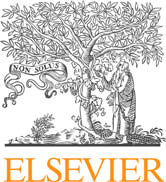T.27e red blood cell milk replacers
Red Blood Cell Milk Replacers An Economic Alternative in Calf Nutrition Around the world research has been conducted analyzing the value of spray-dried animal plasma and spray-dried blood. These products have become critical ingredients in diets for young animals. Spray- dried whole blood has also been used for a number of years as a high-quality feed ingredient. Red blood cells

 J. Chem. Thermodynamics 40 (2008) 1661–1665
Thermodynamic properties of caffeine: Reconciliation of availableexperimental data
Vladimir N. Emel’yanenko, Sergey P. Verevkin *
Department of Physical Chemistry, University of Rostock, Hermannstrasse 14, D-18051 Rostock, Germany
Molar enthalpies of sublimation of two crystal forms of caffeine were obtained from the temperature
dependence of the vapour pressure measured by the transpiration method. A large number of primary
experimental results on the temperature dependences of vapour pressure and phase transitions have
been collected from the literature and have been treated in a uniform manner in order to derive sublima-
tion enthalpies of caffeine at T = 298.15 K. This collection together with the new experimental resultsreported here has helped to resolve contradictions in the available sublimation enthalpies data and to
recommend a consistent and reliable set of sublimation and formation enthalpies for both crystal forms
under study. Ab initio calculations of the gaseous molar enthalpy of formation of caffeine have been per-
formed using the G3MP2 method and the results are in excellent agreement with the selected experi-
Ó 2008 Elsevier Ltd. All rights reserved.
J. Chem. Thermodynamics 40 (2008) 1661–1665
Thermodynamic properties of caffeine: Reconciliation of availableexperimental data
Vladimir N. Emel’yanenko, Sergey P. Verevkin *
Department of Physical Chemistry, University of Rostock, Hermannstrasse 14, D-18051 Rostock, Germany
Molar enthalpies of sublimation of two crystal forms of caffeine were obtained from the temperature
dependence of the vapour pressure measured by the transpiration method. A large number of primary
experimental results on the temperature dependences of vapour pressure and phase transitions have
been collected from the literature and have been treated in a uniform manner in order to derive sublima-
tion enthalpies of caffeine at T = 298.15 K. This collection together with the new experimental resultsreported here has helped to resolve contradictions in the available sublimation enthalpies data and to
recommend a consistent and reliable set of sublimation and formation enthalpies for both crystal forms
under study. Ab initio calculations of the gaseous molar enthalpy of formation of caffeine have been per-
formed using the G3MP2 method and the results are in excellent agreement with the selected experi-
Ó 2008 Elsevier Ltd. All rights reserved.